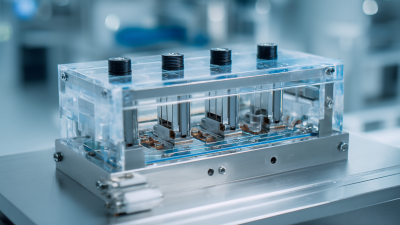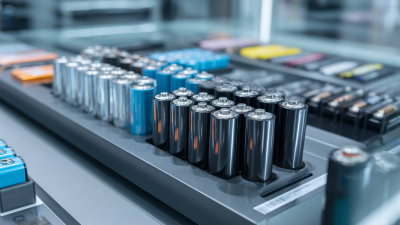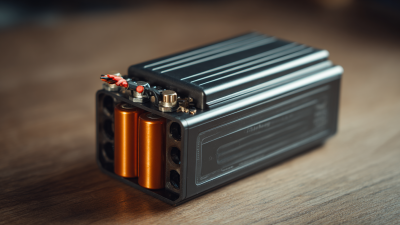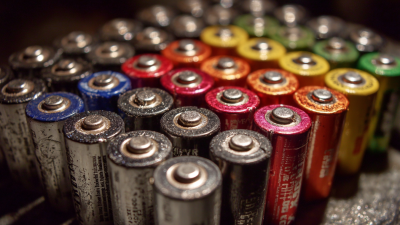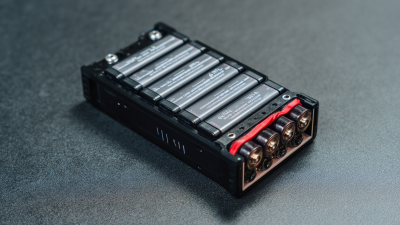 +86-13928815851
+86-13928815851
Leave Your Message
-
 CONTACT NUMBER
CONTACT NUMBER -
 CONTACT NUMBER
CONTACT NUMBER -
 CONTACT NUMBER
CONTACT NUMBER



As the demand for efficient and sustainable energy storage solutions continues to surge, the energy storage industry is witnessing a transformative shift with the advent of Cp Pouch Cells. These innovative battery designs are at the forefront of enabling future technologies, particularly in electric vehicles (EVs) and renewable energy systems. According to a recent report by IDTechEx, the global demand for energy storage systems is expected to reach over 1,000 gigawatt-hours (GWh) by 2030, driven in large part by advancements in battery technologies like Cp Pouch Cells. This emergence is attributed to their superior energy density, lightweight design, and flexibility, which present significant advantages over traditional cylindrical cells. As major players in the battery industry invest heavily in the production and development of Cp Pouch Cells, we delve into the factors propelling their rise and the potential impact on the future of energy storage technology.

 Cp pouch cells are an innovative form of energy storage technology that has gained traction in recent years. These cells are characterized by their flexible, lightweight design, which allows them to be used in a wide variety of applications, from electric vehicles to portable devices. Unlike traditional cylindrical or prismatic batteries, Cp pouch cells are encased in a soft, flexible pouch, enabling more efficient use of space and better thermal management. This design flexibility opens doors for integrating energy storage into new and compact technologies, making them particularly appealing in the rapidly evolving landscape of consumer electronics and electric transportation.
Cp pouch cells are an innovative form of energy storage technology that has gained traction in recent years. These cells are characterized by their flexible, lightweight design, which allows them to be used in a wide variety of applications, from electric vehicles to portable devices. Unlike traditional cylindrical or prismatic batteries, Cp pouch cells are encased in a soft, flexible pouch, enabling more efficient use of space and better thermal management. This design flexibility opens doors for integrating energy storage into new and compact technologies, making them particularly appealing in the rapidly evolving landscape of consumer electronics and electric transportation.
Another significant advantage of Cp pouch cells is their potential for higher energy density. This means they can store more energy in a smaller volume compared to other battery types, enhancing the performance and range of electric vehicles and other applications. Furthermore, the manufacturing process for these pouch cells can be more streamlined, potentially reducing production costs. As industries continue to prioritize sustainability and efficiency, Cp pouch cells represent a promising pathway forward in the quest for advanced energy storage solutions, paving the way for innovations that meet the demands of modern technology.
As technology advances, CP pouch cells are emerging as a significant alternative to traditional battery designs. These cells are not only lightweight and compact, but they also provide superior energy density, making them ideal for modern applications in energy storage systems. Compared to conventional cylindrical or prismatic batteries, CP pouch cells can be manufactured with greater flexibility in size and shape, allowing them to fit seamlessly into various devices, from electric vehicles to consumer electronics.
Tips: When considering energy storage solutions, think about the specific application and requirements of your device. CP pouch cells excel in scenarios where space is limited but performance is paramount. Their design enables rapid charging and discharging, which is ideal for applications requiring quick bursts of energy.
Moreover, the thermal management properties of CP pouch cells enhance their safety profile. Unlike traditional battery designs that can suffer from overheating issues, CP pouch cells are designed to dissipate heat more effectively. This ensures not only longer lifetimes for the cells but also increases the safety of the systems they power. Ultimately, the shift towards CP pouch cells represents a promising trend in the future of energy storage technology.
The rise of Cp pouch cells is revolutionizing energy storage across various modern technologies, particularly in the fields of electric vehicles (EVs) and renewable energy systems. These cells, known for their high energy density and lightweight design, enable enhancements in performance and efficiency. According to a recent report from the International Energy Agency (IEA), the global electric vehicle market is expected to grow by over 40% annually, leading to an increasing demand for advanced battery technologies like Cp pouch cells.
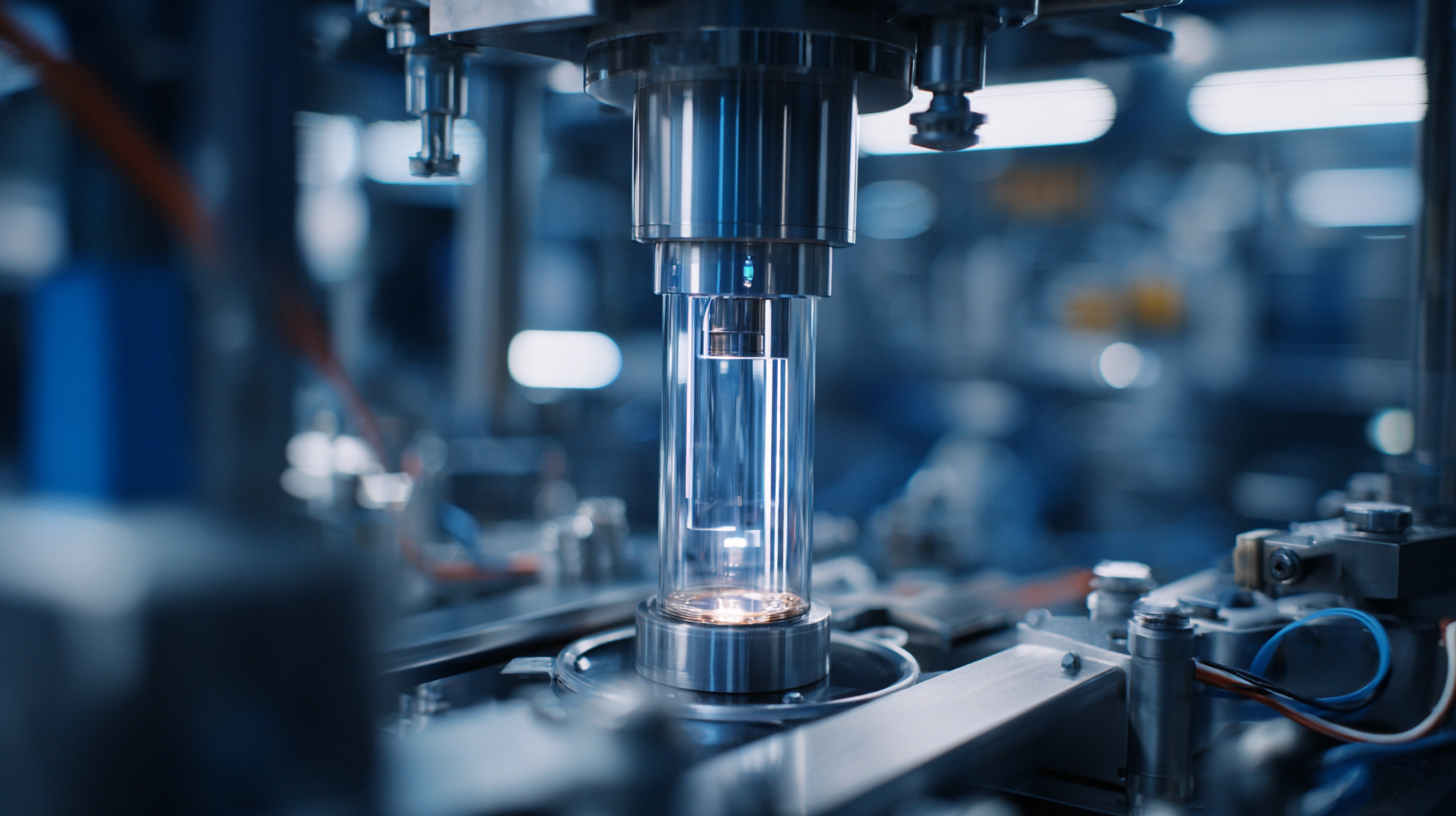
In addition to electric vehicles, Cp pouch cells are making significant strides in consumer electronics and portable devices. Their thin and flexible design allows them to fit into sleek products without compromising on power or safety. A study from Bloomberg New Energy Finance indicates that by 2030, the use of pouch cells in consumer electronics will contribute to a substantial decrease in production costs, further driving adoption in various sectors.
Tip: When considering energy storage solutions, always evaluate the specific needs of your application. For instance, if weight and space are critical factors, Cp pouch cells may provide the optimal balance of performance and design flexibility. Exploring this innovative technology can lead to more efficient, sustainable solutions in your projects.
The development of Cp pouch cells presents unique challenges and opportunities in the fast-evolving landscape of energy storage technologies. One pertinent challenge lies in enhancing the safety and reliability of these cells, particularly when compared to conventional lithium-ion batteries. As the demand for electric vehicles (EVs) surges, issues related to thermal stability and the lifecycle of battery components become increasingly critical. Recent discussions on lithium-ion battery safety have highlighted the need for rigorous testing standards and innovative safety strategies to mitigate risks associated with energy storage systems.
Moreover, integrating advancements such as intelligent modular battery-swapping systems can offer solutions to some of these challenges. By adopting new technologies that enable efficient power solutions for EVs, like those recently introduced in the market, the energy storage sector can transition towards more sustainable practices. Research on hybrid renewable energy systems also indicates potential synergies that could benefit the development of Cp pouch cells. These advancements may pave the way for innovative designs that efficiently combine various energy sources while addressing the pressing need for safer and more reliable energy storage options in the future.
As the demand for energy storage solutions continues to grow, the emergence of Cp pouch cells is reshaping the landscape of modern technology. These thin, lightweight batteries offer a significant advantage over traditional cylindrical or prismatic cells, primarily due to their higher energy density and flexibility in design. According to a recent report by the Energy Storage Association, the global market for energy storage is projected to reach USD 500 billion by 2030, with pouch cells playing a crucial role in this expansion as they can be integrated seamlessly into various applications, from electric vehicles to portable devices.
One of the most exciting trends in energy storage technology is the development of solid-state Cp pouch cells, which promise to deliver even greater performance. Research indicates that these solid-state batteries can achieve up to 40% more energy storage capacity than their liquid counterparts, substantially extending device longevity and range. Furthermore, their enhanced safety profile reduces the risk of thermal runaway, making them an attractive alternative for high-demand applications.
**Tips for Future Energy Storage Choices:**
1. **Prioritize Energy Density:** When selecting energy storage solutions, consider options that maximize energy density without compromising safety.
2. **Stay Updated on Technology Trends:** Follow industry reports and analyses to understand advancements in pouch cell technology that may influence your purchasing decisions.
3. **Evaluate Lifecycle Costs:** Assess the total cost of ownership for energy storage systems, including efficiency over time and potential recycling options.
| Parameter | Traditional Cells | Cp Pouch Cells | Future Potential |
|---|---|---|---|
| Energy Density (Wh/kg) | 150-250 | 250-400 | 400+ |
| Cycle Life (Cycles) | 500-1000 | 1000-3000 | 3000+ |
| Charging Time (minutes) | 60-120 | 30-60 | <30 |
| Temperature Range (°C) | -20 to 60 | -40 to 70 | -40 to 80 |
| Cost ($/kWh) | 300-500 | 200-350 | 100-200 |
